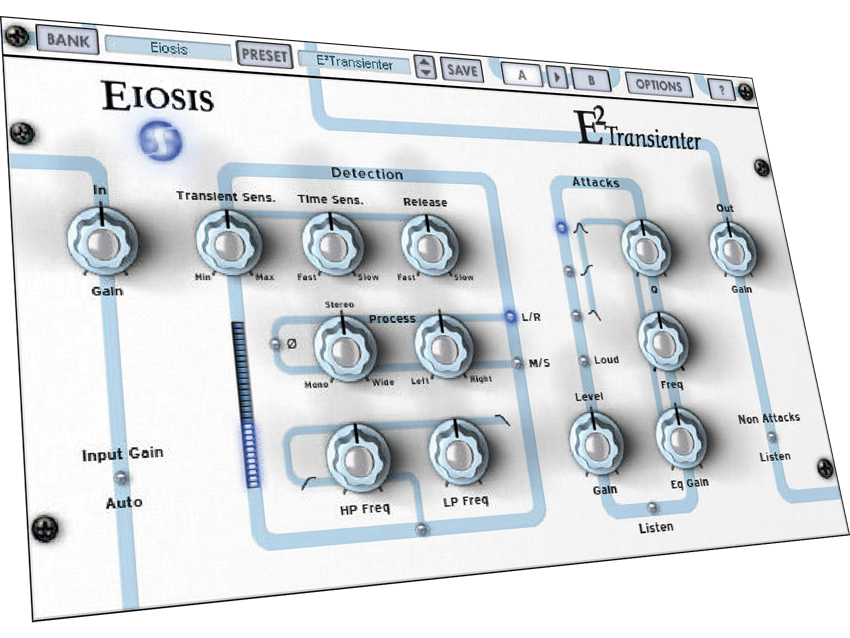MusicRadar Verdict
A fantastic processor for percussion sounds or any sound sources with transient detail.
Pros
- +
Can sound as transparent as glass or as aggressive as an axe. Once you've grasped the basics, the interface is easy to use. Comes with a large range of presets.
Cons
- -
Can be confusing at first. Quite pricey.
MusicRadar's got your back
Transients are the brief loud peak that occurs at the very start of a sound - the initial 'crack' of a snare drum, the pluck of a plectrum against the string of a guitar, maybe the thud of a beater against a kick drum.
Transients are fundamentally important to our perception of sound. They give us more information about a sound source than any other component - is it near or far, a threat or an opportunity, a guitar or a harpsichord?
This little known fact has long been recognised by equipment manufacturers - Roland Corporation even based a whole style of synthesis on this very concept in the 1980s known as Linear Arithmetic synthesis (The D50 is the best known keyboard to feature it).
A way of processing these transients in isolation could be extremely powerful. Maybe we could brighten a hi-hat in a mix without brightening the crash cymbal? Or how about boosting the thud of the kick drum without increasing the 'boom', too? Maybe we could remove the transients to smooth out a guitar part without compressing the rest of the track?
Eiosis has released E2 Transienter for exactly these purposes.
Overview
The E2 Transienter is available for download from the Eiosis website - installation is simple, but you will need an iLok or Syncrosoft key for authorisation.
We were rather confused by Transienter at first. Its operation is not obvious to the newcomer, but once we'd grasped the basic concepts of transient detection, we discovered how powerful this processor can be.
Want all the hottest music and gear news, reviews, deals, features and more, direct to your inbox? Sign up here.
With careful use, you can combine two drum loops by sculpting out or boosting transients with ease.
E2 Transienter is divided into two main sections - Detection and Attacks. In Detection, you can fine-tune which frequency range the Transienter will react to with a sidechain filter.
You can also adjust how quickly it reacts to transients with the sensitivity and release controls - if the release is set to fast, then the effected sound could be as short as the first couple of milliseconds of the transient.
Set to a longer release and the effect sounds more natural but also starts changing the subsequent non-transient sections of the audio - you have to play a subtle balancing act between transparent and obvious here.
The Attack settings are where you change the boost or reduction of the detected transients with a filter. You have a choice of four filter shapes - hi-shelf, lo-shelf, bell or loud.
Combine the Detection and Attacks sections and you have the ability to isolate the transients within specific frequency ranges in your track and EQ them in isolation, while letting the non-transient components of the track pass through unaffected.
The filter sounds superb and can act as subtly as a whisper or can bludgeon your mix like a hammer.
Summary
The E2 Transienter works best on material with a large amount of transients - it's little use on vocals for example. But it can breathe new life into basslines, piano parts and pretty much anything else that has a clearly defined transient peak, and not just at the beginning of the sound.
The price tag might make some potential users wince, but we would highly recommend this processor to anyone who creates dance music. It's indispensable for producers who regularly lock disparate percussion sound sources together to give them an extra punch without detracting from their sound.
